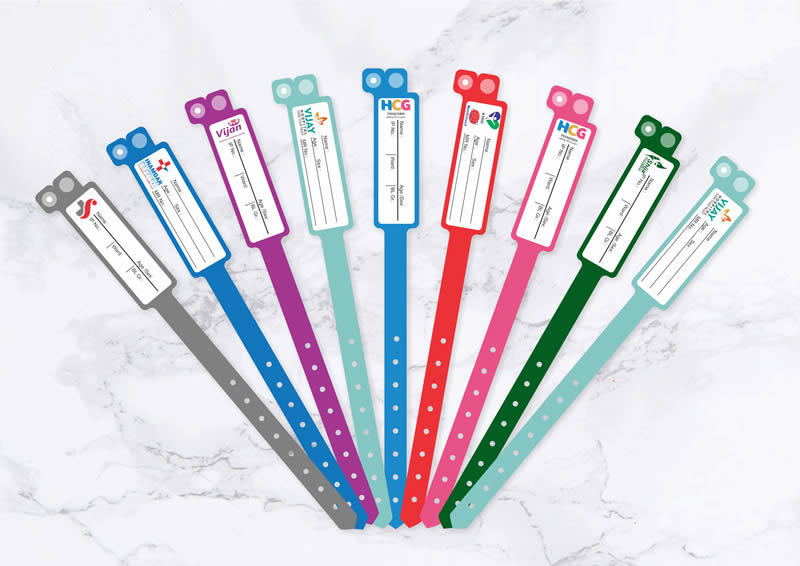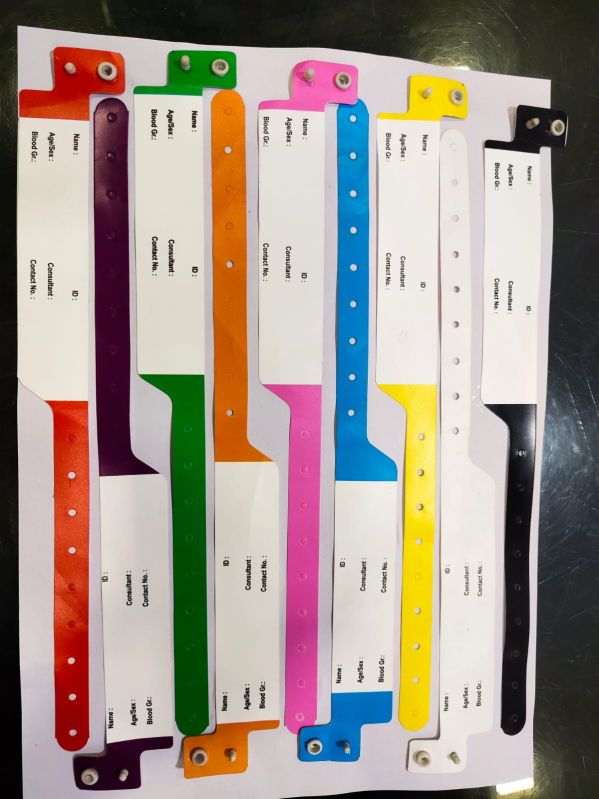Discovering the Different Sorts Of Patient Identification Band Made Use Of in Clinical Facilities
In the intricate globe of health care, the vital function of Patient Identification bands typically goes unnoticed. These bands, differing from basic paper wristbands to advanced RFID bands, form the foundation of Patient safety and security procedures, ensuring accuracy in Patient Identification. The substantial diversity of these bands, each with its one-of-a-kind benefits and constraints, is commonly neglected. As we browse with this subject, one may obtain insight right into the subtle intricacies and crucial importance of such bands in clinical facilities.
Understanding the Importance of Patient Identification Bands
While they might appear like mere devices, Patient Identification bands play a vital role in clinical facilities. These bands offer as an important tool for confirming Patient identification, avoiding medical errors associated to misidentification. Patient Identification bands likewise help in improving administrative jobs, making certain exact record-keeping and payment.
Standard Paper Wristbands: Their Usage and Limitations
Standard paper wristbands have been a staple in Patient Identification throughout different medical facilities. While their use prevails, they nurture particular constraints that might impact their efficiency in Patient monitoring. This section will certainly focus on the extent of their application and the fundamental drawbacks related to their usage.
Paper Wristbands: Use Extent
In the world of Patient Identification, paper wristbands have long held a vital function. These bands are commonly utilized in outpatient settings, where the Patient's stay is short-term. Regardless of improvements in modern technology, the simple paper wristband remains a dependable and cost-efficient remedy for Patient Identification in different medical care scenarios.
Limitations of Paper Wristbands
Despite their prevalent use, paper wristbands are not without their disadvantages. In addition, paper wristbands typically do not have the technological capabilities of more modern alternatives, such as barcoding or RFID chips, restricting their performance to simply showing created info. Paper wristbands can cause discomfort or skin irritation to some individuals, especially when used for prolonged durations.
Barcoded Wristbands: Advancements in Patient Identification
While Patient Identification has long been an essential facet of healthcare, the introduction of barcoded wristbands represents a significant leap forward. These bands utilize the simpleness of barcoding innovation, permitting Patient info to be promptly scanned and accessed. They improve the rate and precision of Patient Identification, lowering the threat of clinical mistakes associated with misidentification. Barcoded wristbands are cost-effective, easy to produce, and get rid of handwriting mistakes common with hand-operated systems. Nonetheless, they are not without limitations. While they provide improvements over standard bands, the barcode can end up being used or smudged, providing it unreadable. Despite this, barcoded wristbands stay an essential device in modern-day health care settings, symbolizing the intersection of technology and Patient care.
Superhigh Frequency Identification (RFID) Bands: a Step In The Direction Of Futuristic Healthcare
The advancement of Patient Identification bands has actually caused the introduction of Radio Regularity Identification (RFID) Bands (patient identification band). These innovative devices existing crucial advantages for healthcare centers, supplying a much more efficient and technologically progressed ways of Patient Identification. The application of RFID in health care is a significant step in the direction of a much more futuristic approach to Patient monitoring and security
Comprehending RFID Bands

RFID Bands: Trick Advantages
Mostly, these bands boost Patient safety by offering exact, rapid Identification, thereby decreasing clinical mistakes. RFID bands can save a vast amount of Patient data, consisting of clinical background and allergies, enabling personalized care. On the whole, RFID bands stand for a significant improvement in Patient Identification innovation, benefiting both clients and healthcare service providers.
Implementing RFID in Health Care
As we enter a highly advanced period, the implementation of RFID bands in health care becomes increasingly essential. These bands offer a smooth means to track and recognize patients, guaranteeing their security and enhancing efficiency in therapy procedures. RFID bands provide various advantages over traditional Identification approaches. They can save a huge quantity of information, including the Patient's case history and treatment strategies, which can be quickly accessed by health care companies. This information assists medical professionals make educated decisions concerning the Patient's treatment strategy. Additionally, RFID bands reduce clinical mistakes by giving accurate Patient Identification, which is important in preventing misdiagnosis or incorrect medicine management. Hence, the application of RFID bands is a significant step in the direction of enhancing Patient security and healthcare distribution.

Color-Coded Wristbands: Helping in Quick and Accurate Diagnosis
In the busy setting of a medical center, color-coded wristbands have arised as important tools for swift and specific Identification of a patient's clinical problem. These wristbands, worn by clients, lug specific colors that correspond to various clinical conditions or statuses. This system is created to supply immediate visual hints to health care companies, boosting Patient safety and care quality.
Techniques for Efficient Execution and Monitoring of Patient ID Bands
Accomplishing optimal usage of Patient Identification bands demands a well-structured method for their implementation and monitoring. Patient education and learning is likewise important; patients have to comprehend the purpose of the bands and the demand for their continuous wear. It's vital to have a back-up strategy in place, such as barcode scanning or biometrics, to make certain that Patient Identification is never compromised.
Final thought
Patient Identification bands are critical in medical centers to make sure security and accuracy. Reliable implementation and management of these bands can significantly decrease medical errors, enhance performance, and enhance overall Patient treatment.
These bands, varying from easy paper wristbands to sophisticated RFID bands, develop the backbone of Patient safety protocols, guaranteeing precision Homepage in Patient Identification.The advancement of Patient Identification bands has actually brought regarding the appearance of Radio Regularity Identification (RFID) Bands. In general, RFID bands represent a considerable development in Patient Identification technology, profiting both people and medical care service providers.
RFID bands decrease medical errors by offering accurate Patient Identification, which is essential in avoiding misdiagnosis or wrong medicine administration. Patient education and learning is likewise critical; patients must understand the objective of the bands and the need for their constant wear.